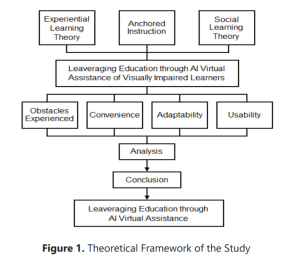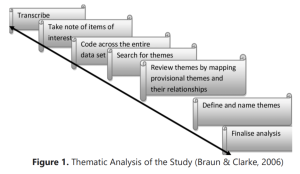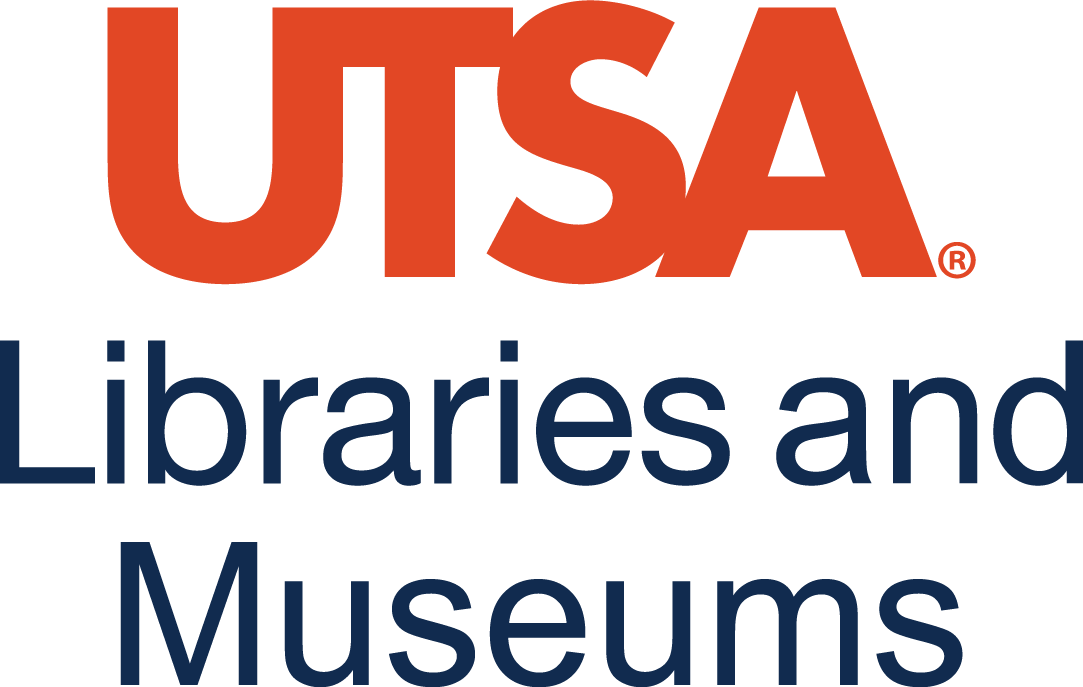Artificial Intelligence
5 Leveraging Education Through Artificial Intelligence Virtual Assistance: A Case Study of Visually Impaired Learners | Review
Tamara Tupper
Article
Mina, P. N. R., Solon, I. M., Sanchez, F. R., Delante, T. K., Villegas, J. K., Basay, F. J., Andales, J.- r, Pasko, F., Estrera, M. F. R., Samson Jr., R., & Mutya, R. (2023). Leveraging Education through Artificial Intelligence Virtual Assistance: A Case Study of Visually Impaired Learners. International Journal of Educational Innovation and Research, 2(1), 10–22. https://doi.org/10.31949/ijeir.v2i1.3001
Authors
Romel C. Mutya
Biology Instructor, Cebu Technological University-Danao Campus
Romel Mutya’s an instructor on the campus of Cebu Technological University
Danao. He is a graduate of BSED major in Biological Science and Master of Arts
in Education major in Teaching Biology. He’s a Ph.D. student of education at the
University of Cucn Normal, studying Science Education.
Article: Summary and Review
summary
The study focuses on an in-depth analysis of artificial intelligence to leverage learning for visually impaired students through AI virtual assistance. The investigation focuses on describing the challenges and difficulties encountered by visually impaired learners, highlighting the use of artificial intelligence virtual assistance, the adaptability of visually impaired learners, and enhancing the curriculum. The study participants were between ages of 15 to 23 with a variety of disabilities: intellectual, hearing impaired, and visual impairments. All participants had a form of visual impairment. Findings revealed five themes: (1) barriers in the learning process, (2) essentiality of AI virtual assistants, (3) achieving competence through technology, and (4) inclusive teaching and learning environment. These findings show that the pandemic presents challenges for visually impaired learners in the classroom, such as personal difficulties, lack of resources, and adaptation to new learning modalities. However, virtual assistance through artificial intelligence enabled them to explore their potential and help them perform academic tasks that are generally difficult due to visual impairment.
Research Method
The qualitative case study method was used to explore emerging trends in this study phenomenon of balancing education through AI virtual assistance for visually impaired learners. The study focuses on Experiential Learning Theory, Anchored Instruction, and Theory of Learning. The experiential learning theory by David Kolb (1984) is based on the premise that the best way to learn something is to do it themselves, including visually impaired learners’ experiences with AI virtual assistance to leverage education. The four stages of the mediational process of the theory are concrete learning, reflective reflection, abstract conceptualization, and active experimentation. Mediation helps explain how people can acquire new knowledge, learn from experience, and make choices. It applies to many psychology fields, particularly community learning, personality development, aggression, and observation studies, which seek to understand how individuals build up beliefs, attitudes, and behavior. In using artificial intelligence virtual assistance to enhance education, The Social Learning Theory by Albert Bandura in 1971 is crucial for modeling, observing, and imitating the behavior of visually impaired learners. Four processes are present through the process of the theory: attention, retention, reproduction, and motivation.

Data Collected And Analyzed
The participants are high school students. A certificate to conduct the study from the school’s superintendent and principals was secured. Upon approval, the participants were sent an invitation and a consent form to request permission to conduct the study before the interview, correctly indicating their willingness to participate and understanding all the rights of refusal and withdrawal. The informed consent form provided strict confidentiality. Data were obtained through semi-structured face-to-face and virtual interviews while maintaining the general safety and protocols. A panel of experts has verified guide questions. To confirm their suitability and the results of this study, they have undergone a thorough review and revision. Participants were encouraged to speak freely regarding the questions during the interview process. Audio tapes have been used for recording during the interview. The study used a thematic data analysis, which is essential to investigate how virtual assistance through AI could be applied in education. The researchers transcribed voice recordings to improve the data’s credibility. To fully understand the subject, material acquired in face-to-face and virtual discussions has been noted and carefully investigated. The researchers used the Braun and Clarke methodology to analyze the data, which is suitable for the qualitative study. The method has six steps to analyze the gathered data: transcribe, take note of items of interest, code across the entire data set, search for themes, review themes by provisional mapping themes and their relationships, define and name the themes, and finalize the analysis.

Findings
Four themes emerged from the analysis of the narratives of the visually impaired learners: (1) barriers in the learning process, (2) essentiality of the AI virtual assistant, (3) achieving competence through technology, and (4) inclusive teaching and learning environment. These themes captured the in-depth analysis of leveraging education through AI virtual assistance among visually impaired learners. Vulnerable individuals, including people with disabilities, were the most affected in this time of uncertainty. Because of the pandemic, students with vision impairment were in a difficult situation. Due to the lack of experience and unfamiliarity with this technology, students with visual impairment could not use an AI virtual assistant.
- Barriers in the Learning Process: This was the first time they used the technology because of the pandemic, and they struggled with it at first but slowly learned how to use it. Apart from Google TalkBack, some students needed to familiarize themselves with other AI virtual assistants. They were uncomfortable using this technology since some had been slow encoders. Adaptation of new teaching practices in order to reduce the effect of pandemics on education institutions has been identified as one of the barriers for students with visual impairment. The dramatic changes in their daily rhythm and learning patterns greatly impacted them.
- Essentiality of the AI Virtual Assistant: For visually impaired students, AI virtual assistant has been a great help. This technology is competent in giving learners agility of updatable response with timely responses, can read what is written on the screen for the users, and describe a visual image with a voice command feature. An artificial intelligence virtual assistant is available to everyone, allowing learners to see, understand, navigate, and interact with learning material.
- Achieving Competence through Technology: The AI virtual assistant has been helpful to students in achieving an understanding of the lesson and achieving their potential. Participants have read and learned more quickly through the help of this technology. It has been instrumental in advancing progress for participants. AI has opened the visual world. The participants have accomplished a variety of tasks thanks to this technology.
- Inclusive Teaching and Learning Environment: The right of all students to a learning experience that respects diversity enables participation, removes barriers, and foresees and takes into account the different learning needs and preferences that should be recognized in inclusive learning and teaching. The technological barriers faced by visually impaired pupils and the legal means of overcoming these obstacles and promoting inclusive education must also be known to teachers. Comments by visually impaired students suggest that inclusive education can promote social acceptance and rights and overcome discriminatory practices against people with disabilities.
Impact and Reflections for the Field
The pandemic has presented challenges like personal difficulties, insufficient resources, and adaptation to new learning methods. However, learners can explore learning potential through AI virtual assistance. This technology enables students to fulfill their academic tasks that are generally difficult because of visual impairment, e.g., handling module material and communicating with teachers.
Implications for Practice
This assistive technology has enhanced the potential for personal and professional growth for visually impaired people. The ability of learners with disabilities is enhanced and improved using adaptive technology devices. Unlike some disabilities, most visually impaired students are aware of the environment through touch and hearing. If these learners lack the ability to use assistive technology, they may have difficulty accessing technology and exploring the world they reside in. In this respect, assistive technology has become a part of the core curriculum in junior high schools. To obtain an adequate knowledge of information technology programs, teachers need to participate in extensive training for teaching visually impaired learners.
Recommendations for Future Research
Propose potential avenues for future research based on the gaps or unanswered questions identified in the analyzed article. AI virtual assistants can help people with visual impairments navigate life, education, and careers. The AI virtual assistants provide different features and functions that enable people with visual disabilities to live independently. Users can perform various tasks with voice commands thanks to virtual assistants such as Siri Apple, Google Assistant, and Amazon Alexa. Text-to-Speech and Speech-to-Text features enable users to have text content read aloud to them or convert their spoken words into text. In addition, turn-by-turn navigation can be provided by AI Virtual Assistants, making it more convenient for visually impaired users to travel independently. Voice-guided directions are provided by apps such as Google Maps and Apple Maps, which help them navigate public transport. Information from the Internet, reading news, or answering questions can be retrieved by virtual assistants. It helps people with visual impairment stay current and get the information quickly. Virtual assistants can control smart home devices, making it easier for visually impaired people to manage their environment, from adjusting the temperature to turning the lights on and off. Through enhanced independence, access to information, and the ability to operate their environment utilizing voice commands and additional available features, AI Virtual Assistants have greatly increased the quality of life for those who are visually impaired. These advances will continue to evolve, providing valuable assistance to the visually impaired community.

